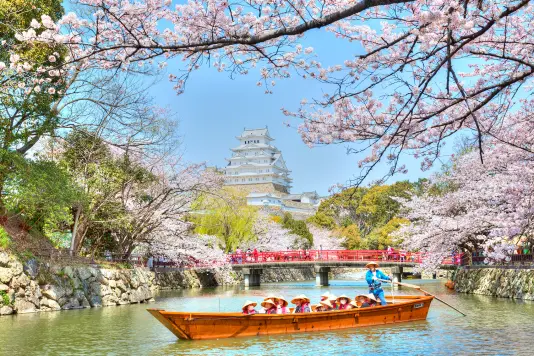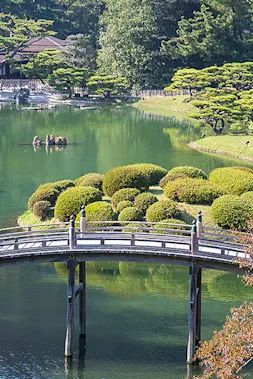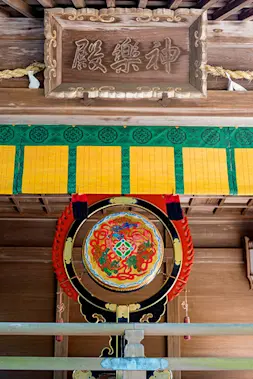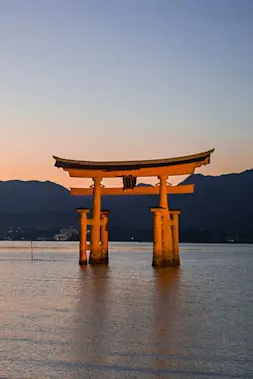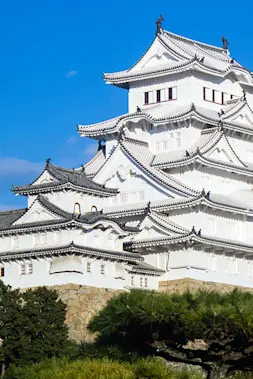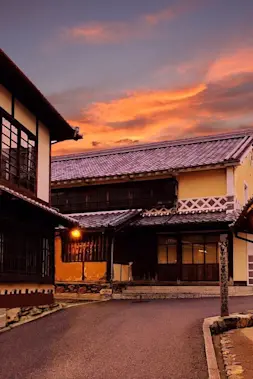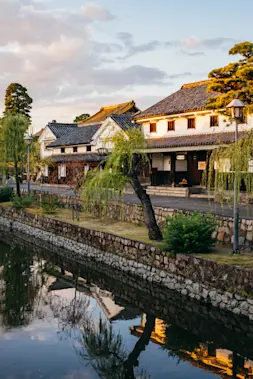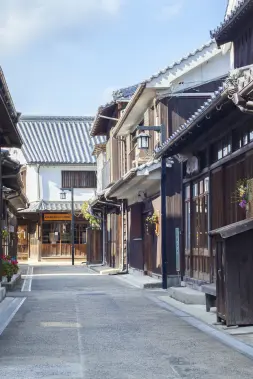History
Himeji Castle - The White Heron

-
- DESTINATION NAME
- Hyogo
-
- RELATED TAGS
-
- LAST UPDATED
- 27 February, 2020
The first thing that strikes me as I stroll toward the illustrious Himeji Castle is its gleaming white surface. Shimmering in the sunlight against a bold blue sky, there’s no question as to where its monikers Hakuro-jo and Shirasagi-jo (“white egret castle” and “white heron castle”) come from. The wooden masterpiece is snow-white and elegant, like a bird poised for flight.
The fortress was erected in 1333, and has since been rebuilt and remodeled multiple times by various daimyo (feudal lords). The last major overhaul of the castle, when the main keep was built, was done in 1609 under order of Terumasa Ikeda, Shogun of Western Japan. Considered the finest example of 17th-century Japanese architecture, the castle was closed in 2010 for an extensive five-year, 2.3 billion yen restoration, known as the Heisei Restoration. The operation focused on anti-seismic reinforcement, roof replacement, and reapplying the castle’s signature white plaster. Himeji Castle reopened to the public in March, 2015.
Eager to experience this historic monument for myself, I enter through the castle’s main gate — the Otemon Gate — and make my way to the admissions office to purchase my ticket. It is here that I meet Kenji Miyazaki, my volunteer guide for the morning, and together we proceed toward the main keep.
Himeji Castle is a national treasure, and also one of the country’s first UNESCO World Heritage Sites. The picturesque castle has served as the backdrop for several epic tales, including the 1967 film, James Bond: You Only Live Twice. One of Japan’s 12 original castles, it is considered the archetype of Japanese castle architecture. Though it was never besieged, it was certainly combat-ready, with an elaborate, built-in security system considered highly advanced for its time, with looming towers, impossible-to-climb slanted walls, and more.
“It’s no wonder no one ever tried to invade this castle,” chuckles Kenji. The fortress has approximately 1,000 sama (loopholes in the shapes of circles, triangles, squares, and rectangles) strategically placed for archers and armed guards to pick off any potential intruders. There are also a variety of “stone-drop windows” (ishiotoshi mado) — angled chutes from which stones or boiling water could be cast upon invaders. We roam toward the Hanomon gate which, from the outside, appears to provide the shortest route to the central tower. However, I soon discover it’s a clever trick, as the path brings us further away from the tower. This labyrinthine is part of the structure’s defensive design, which once included 84 gates and three moats (though only 21 gates and the inner moat exist now). Despite the signs posted, I’m certain I’d still get completely turned around without my trusty guide, Kenji. Eventually, he leads me right up to the colossal main tower, known as the tenshukaku, which dominates the Himeji skyline.
The shiny gem of this priceless cultural asset is the recently-restored main keep (daitenshu), a hall with great, wooden doors emanating a feudal air. Externally, the 46.4 meter keep appears to have five floors, because the second and third floors from the top look like a single floor. However, it actually has six floors and a 385 square meter basement containing special facilities not seen in other castles, including lavatories, a drain board, and a kitchen. The 554 square meter first floor of the keep is lined with more than 330 tatami (straw mats), and is often called the “thousand-mat room.” The walls of the first floor are clad with weapon racks (bugukake) for matchlocks and spears. At one point, the castle contained as many as 280 guns and 90 spears.
Once inside, Kenji and I climb all six levels, the staircases seemingly steeper the higher we go. Along the way, I gaze out at the city, and wonder how good a shot I’d be if charged with shooting arrows through these holes while defending the castle. Both the third and fourth floors have platforms at the north and south windows called “stone-throwing platforms” (ishiuchidana), where defenders could observe, or throw objects at, approaching enemies. They also have small enclosed rooms called “warrior hiding places” (mushakakushi), from which defenders could surprise attackers who entered the keep. On the top floor, the windows now have iron bars in place, but in the feudal period, the panoramic view from the windows was unobstructed. It is a truly breathtaking scene, with sweeping views of the city and surrounding areas.
It is here that Kenji tells me the lucky history of Himeji Castle, and why it still stands today. Himeji Castle has been blessed with at least three strokes of good fortune.
The Meiji Period (1868–1912) signaled the end of the significance of Japanese castles. At that point, surviving castles became great financial burdens with little benefit. The government also wanted these symbols of the former regime removed and forgotten, ordering all castles to be sold and demolished. Many castles were torn down, and Himeji Castle was slated to share this fate. In 1869, the government auctioned the castle off, and Himeji resident Kanbe Seiichiro bought it for a bargain of 23 yen, around 200,000 yen in today’s currency (between US $1,500 and $2,000). He intended to demolish the castle and redevelop, but it was too costly and “the white heron became a white elephant,” jokes Kenji.
During World War II, a firebomb was dropped directly on the fortress but did not go off, leaving Himeji Castle still standing. Its most recent feat was remaining unscathed by the 1995 Great Hanshin earthquake. “Even the bottle of sake placed on the altar at the top floor remained in place. The gods like sake,” Kenji says with a sly grin. As we descend the stairs and leave the keep, I marvel at the fate of the castle — once an expensive burden, and now one of Japan’s most celebrated national icons.
Returning to the Otemon Gate, I bid farewell to Kenji, who advises me to take a short walk west to the beautiful Japanese garden of Kokoen. Constructed in the early nineties on the former site of the feudal lord’s west residence (Nishi-Oyashiki), the 3.5 hectare area consists of nine separate walled gardens designed in various Edo Period styles. Among these is the garden of the lord’s residence, the largest of the nine, featuring a pond with a waterfall, and hundreds of colorful carp. There are also two teahouse gardens, a pine tree garden, a bamboo garden, and a flower garden.
Where there’s a promise of green tea, I am a moth to a lantern, and I make a beeline for Souju-an — the teahouse facing the main keep of Himeji Castle. Sipping on hot matcha (Japanese green tea), I gaze upon the great “white heron,” as majestic from a distance as it is up close. I feel lucky to have walked the corridors of Himeji Castle, and glad that the gods have smiled upon it all these hundreds of years.
Photographs by Jason Haidar & Text by Celia Polkinghorne
RELATED DESTINATION
Hyogo
Hyogo Prefecture is roughly in the center of the Japanese archipelago. It has the Port of Kobe, which plays an important role as the gateway of Japan. It also is home to plentiful tourist attractions such as Himeji Castle, a UNESCO World Heritage site, and several hot spring areas. Kobe beef, one of the three major brands of wagyu beef, is a delicacy.
